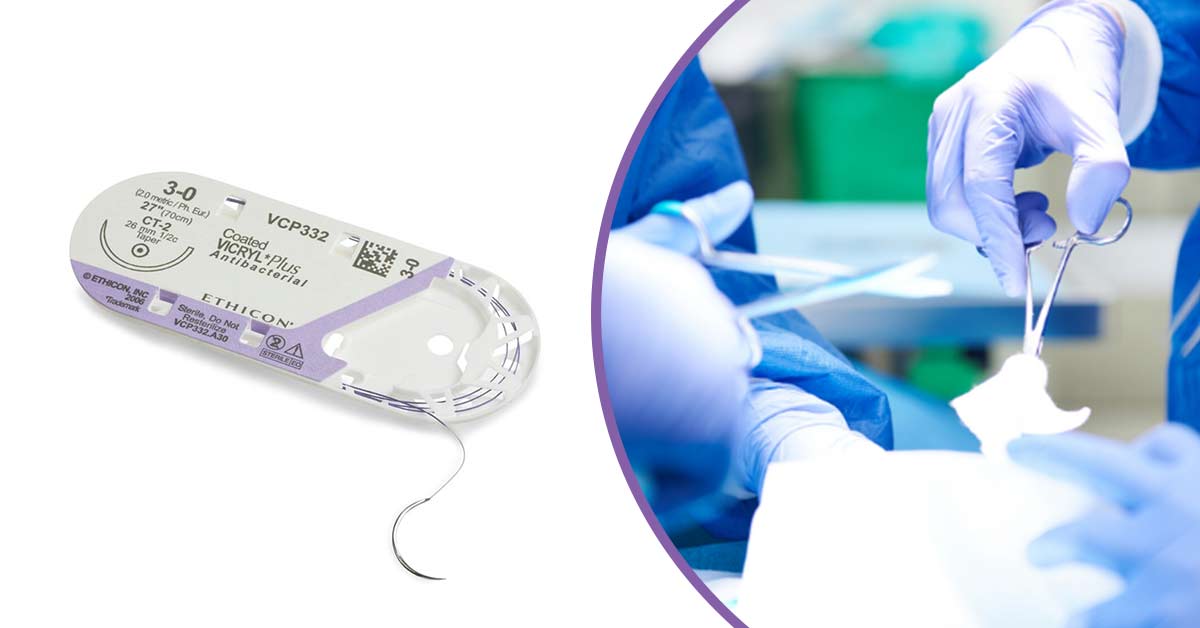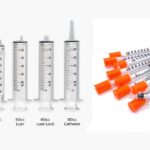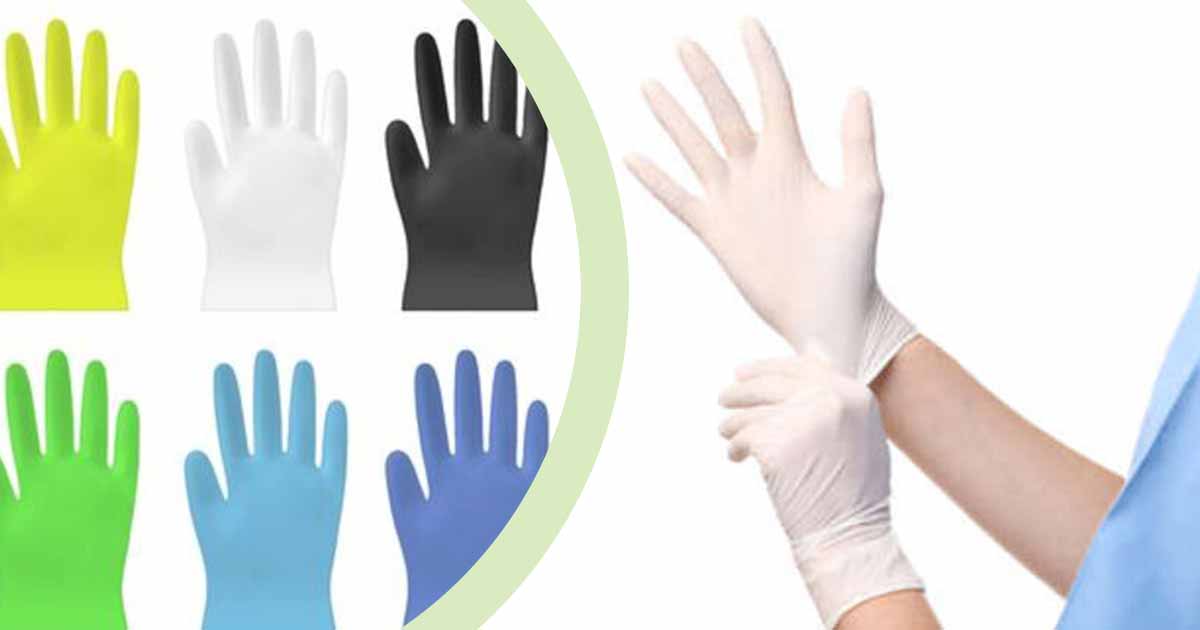Vicryl (polyglactin 910) is the most widely used braided synthetic absorbable suture. The sterile suture was manufactured by Ethicon Inc., a medtech subsidiary of Johnson and Johnson. It is composed of a copolymer made of 90% glycolide and 10% L-lactide.
The sutures are coated with a mixture of equal parts of copolymer of glycolide and lactide (polyglactin 370) and calcium stearate. The polyglactin 910 copolymer and polyglactin 370 with calcium stearate is non-pyrogenic, non-antigenic, and cause less tissue reactions during absorption.
Absorbable sutures can be natural or synthetic. Natural sutures are derived from purified animal tissues (usually collagen), or may be made from purified serosa of bovine intestines. Examples include silk and catgut (made from sheep submucosa). Synthetic absorbable sutures include Polyglactin 910 (Vicryl), Poliglecaprone 25 (Monocryl), and Polydioxanone (PDS).
The main difference is that while natural absorbable sutures degrade by proteolysis, synthetic sources degrade by hydrolysis. Hydrolysis cause less inflammatory reaction, hence, the natural sutures elicit more inflammation at the site of suturing.
Though vicryl sutures are usually dyed during polymerization, they are also available in undyed forms (white).
Uses
Vicryl has been found to be helpful in general soft tissue approximation and/or ligation, peripheral nerve anastomosis, ophthalmic surgery and microsurgery for vessels less than 2 mm diameter. It is also used in abdominal surgery to repair holes in the gastrointestinal tract or bladder.
However, it’s safety and effectiveness in cardiovascular tissue or nerve tissue has not ascertained.
Size and Types of Vicryl Sutures
There are three main types of vicryl sutures:
- Standard Vicryl, which is coated with polyglactin 370 and calcium stearate.
- Vicryl Plus, coated with the antiseptic triclosan.
- Vicryl Rapide, which is made from coated polyglactin has a lower molecular weight. This reduces the tensile strength, making it easily absorbed than standard vicryl. The complete absorption time is 42 days, unlike standard vicryl that takes 60 days.
Vicryl sutures are available in different gauge sizes and length, non-needed or attached to stainless steel needles of different sizes. The needles may be attached permanently or as a control release needles (CR-needles), which makes it possible for the needle to be pulled off and not cut off.
Though vicryl are multifilament sutures, some sizes of vicryl are available as monofilament.
Monofilaments are single filaments with less surface area than a multifilament (braided or twisted suture). Monofilament requires proper handling as it can return to its shape, which makes the suture prone to knot loosening. Multifilament sutures are easier to handle, are more pliable, and hold knots more securely.
Mutifilament sutures may cause more friction through tissues, increased capillarity and surface area, and may increase inflammation and infection. Hence, they are coated to ensure they pass through the tissue easily. Monofilament sutures go through tissues more easily and elicit less inflammatory reaction.
Sizes
The United States Pharmacopeia (USP) and metric system is used to determine the gauge of suture material. The size is in millimeters. The size of the suture represents its diameter. The diameter differences between sizes are about 0.01 to 0.05 mm.
The diameter of the suture affects its handling properties, and tensile strength. Larger sized sutures have lesser diameter. To the left of zero, the suture sizes get smaller as we progress. For example, a 6-0 suture is smaller than 3-0. But to the right of zero, the sizes keep getting bigger. A size 3 suture is less than size 4.
Selection of size of suture should guarantee the suture is as strong as the tissue it holds, but also the smallest size to avoid inflammation and tissue trauma.
The gauge sizes 9-0 and 10-0 are used for cataract surgery. Larger sized sutures are used for suturing the abdomen
- 10-0 to 8-0 for delicate procedures like ophthalmic surgery or nerve repair
- 7-0 to 6-0 are used for facial plastic surgery or repair of small vessels and arteries
- 5-0 to 4-0 are used for skin closures or larger vessel repair
- 5-0 to 4-0 are used for skin closures or larger vessel repair
- 3-0 to 2-0 are used to close muscle layers or wounds where tissue tension is a problem
- 0 to 1 are used to close deep layers in the back, fascia layers in the abdomen or joint capsules
- Sizes 2 to 5 can be used to repair large tendons, thick fascial closures, drain sutures (especially in orthopedic surgery)
| USP Suture Size | Metric Suture Size | Maximum oversize (mm) |
| 10-0 | 0.2 | |
| 9-0 (uncoated braids only) | 0.3 | 0.010 mm |
| 8-0 | 0.4 | 0.020 mm |
| 7-0 | 0.5 | 0.030 mm |
| 6-0 | 0.7 | 0.050 mm |
| 5-0 | 1 | 0.050 mm |
| 4-0 | 1.5 | 0.050 mm |
| 3-0 | 2 | 0.090 mm |
| 2-0 | 3 | 0.060 mm |
| 0 | 3.5 | 0.100 mm |
| 1 | 4 | 0.100 mm |
| 2 | 5 | 0.100 mm |
| 3 | 6 | 0.100 mm |
How Does Vicryl Work?
The vicryl suture cause minimal initial inflammatory reaction in tissues, and ingrowth of fibrous connective tissue. Hydrolysis causes the progressive loss of tensile sstrength,and eventually the suture is absorbed. During the absorption, the copolymer degrades to glycolic acid and lactic acid, which are absorbed and metabolised by the body.
Absorption starts with the loss of tensile strength and is followed by the loss of mass. By five weeks after implantation, all the original tensile strength is lost. The absorption of all the vicryl suture is completed within 56 to 70 days.
| Days after Implantation | % Original Strength Remaining |
| 14 days | 70% |
| 21 days (6-0 and larger) | 50% |
| 21 days (7-0 and larger) | 40% |
| 28 days (6-0 and larger) | 25% |
Precautions
- Absorbable sutures like vicryl may be supplemented with non-absorbable sutures in the closure of sites that may undergo expansion, stretching or distension, to provide additional support.
- Do not resterilise and reuse the device as it may cause the degradation of the product, failure in suturing, cross-contamination, infection or transmission of blood-borne pathogens
- The effectiveness and safety of the suture in cardiovascular and neurological tissues has not been established.
- As a foreign body, prolonged contact of any suture with salt solutions, found in the urinary or biliary tracts, can cause calculus formation.
Adverse Reactions
- Vicryl suture can potentiate an existing infection as a foreign body.
- During the absorption process of the suture, reactions such as transitory local irritation at the site of the wound, inflammatory foreign body response, erythema, and induration of the skin.
References
- https://www.ncbi.nlm.nih.gov/books/NBK539891
- https://www.jnjmedtech.com/system/files/pdf/VICRYL%C2%AE%20Suture.pdf
- https://www.akinglobal.com.tr/uploads/subdir-235-4/ETHICON-Coated-VICRYL-Suture.pdf
- https://news.mercedesscientific.com/en/blog/different-sutures-types-benefits-materials
- https://oxfordmedicaleducation.com/surgery/suture-sizes-and-suggested-indications-for-their-use/











